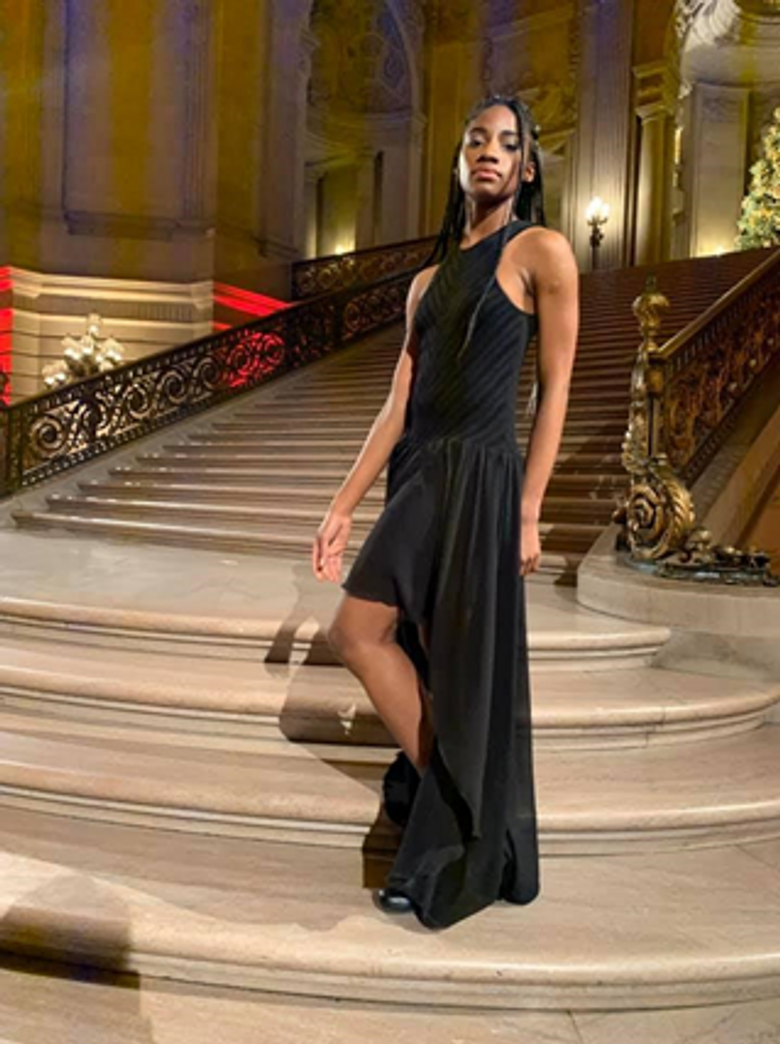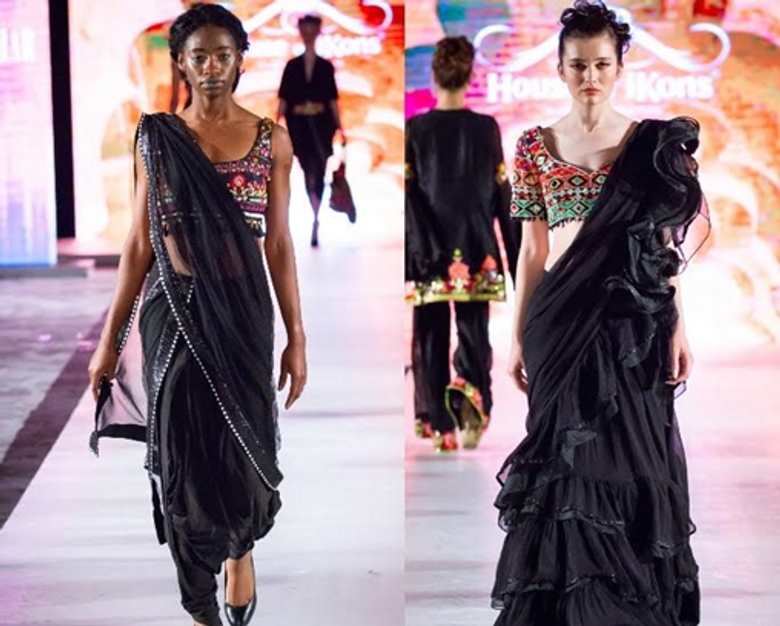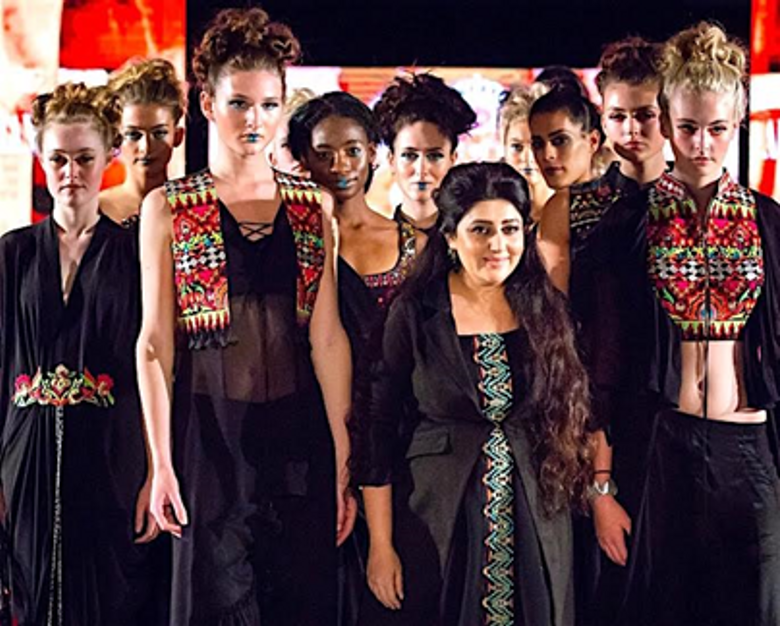Chidinma Kalu: At the Intersection of Psychology, Fashion and Design
Fitting in and standing out -- Chidinma Kalu's journey to find what she had always been looking for
Started with a Shuffle

When Chidinma Kalu first received an iPod Shuffle as a young teenager in Nigeria, she was infatuated. With no computer or cell phone, Kalu used her Shuffle every day and even created a strap for it, similar to an Apple Watch. Inspired by childhood shows like Inspector Gadget and Dexter, Kalu thought of product concepts far before she actually knew what product design or design tools even were. Google Suite, Facebook, Apple - these weren’t comfortable tools for Kalu. And while she knew about them, she didn’t know how to use them.
Getting involved with UX design was like putting together a puzzle. Concepts here, creations there; Kalu was putting together a bigger picture that she couldn't yet identify. Through genuine curiosity and innovation, she began to visualize the possibilities.
“Imagine me, as an immigrant kid, trying to fit into college and what everybody wanted you to be, and not knowing any of these types of things,” Kalu said.
Her first real encounter with design came from identifying the awkward arrangement of an e-commerce website she came across. Kalu took it upon herself to create sketches and designs to improve this website’s look. Kalu recalls putting in so much time, research and effort into her design, and later realized that this was how designers wrote up proposals. While she sent it to the website’s owner and never heard a response, she used the design years later as a skeleton for a project related to the pandemic.
“I thought, okay, I may not be able to code or actually do anything to push this forward, but at least I can sketch something or I can try to talk about it,” she said about wanting to improve the e-commerce website.
Kalu came to the United States to pursue an Associates' Degree at Evergreen Valley College in San Jose, CA for psychology. While she knew psychology wasn’t her vision, she believed that it was her start. She even considered studying law for a bit, but her life-long interest in technology started to fit into her puzzle. Because it was too late in the year to start taking design courses at school, she used Google and online videos to learn new skills.
“I had a lot of ideas that I wanted to bring to life, but I just didn't know how,” Kalu said.
The intersectionality of human psychology and design felt necessary to Kalu. Understanding people and their needs showed her the holes that had to be filled in tech. She sought to help people fix problems, which led Kalu to look for jobs at Apple and AT&T. As a result, she joined the Year Up program which led to contract jobs during her time in college. Kalu also did a six-month internship for Facebook, where she built her network and acquired skills that deepened her focus on design. While her responsibilities were related to user research, she also found herself coming up with suggestions and solutions to improve processes being used at her internship.
“I'm constantly thinking about design, and ultimately figured that I would choose a different path that's impacted by design, but not actually as a designer,” she said.

In addition to design, Kalu did runway and commercial modeling while she pursued her education. She signed up with an agency and attended shows and runway events for photoshoots. Although she got paid, she also did it for fun! While knee-deep in fashion, she would talk to the designers during photoshoots, and even helped her mother design clothes for her to sell.
For almost ten years, Kalu was heavily involved in the fashion industry while better understanding her passion for design. As she walked the runway in the United States, West Africa and Europe, Kalu was also pursuing her education and working full-time, both to fund her academic pursuits and obtain experience in tech. Later, she went to San Jose State University to continue her studies until she graduated with a bachelor’s degree in psychology in 2018.
Kalu worked for Facebook as a product data integrity specialist until 2018, and for Google as a play story app specialist until 2019. In 2019, Kalu started working at Western Digital, where she had responsibilities that included customer analysis, visual design, user research, usability testing and interaction design. Most recently, she worked for Facebook as a product communications specialist, where she focused on customer feedback and understanding their problems.
Now, while she is a freelance contractor (offering UX research, high fidelity prototyping and more) for small businesses and startups, she focuses on visual design skills and self-teaching. Kalu is also constantly adding to her portfolio through hackathons, like Facebook Devpost, and various freelance jobs.
Beautiful Interactions in the Everyday

While working in the fashion industry, Kalu found that fashion design and tech design don’t have the same thought process. But she did realize there was intersectionality between the two. She saw that photography played a large role in fashion and tech design, noting how tech design needs photography to tell a product’s story.
“The way that something is promoted - any kind of demo, any kind of product - has to be very clearly photographed, lighting matters, [it’s] like radiance,” she said. “People being able to tell the story of what they want in their product, you need to show that, and telling a story is something that just cuts across.”
Kalu has a deep curiosity for VR/AR and three-dimensional modeling. She once conducted research for a project about how environmental factors (i.e. VR and music) impact learning. With augmented reality (AR) becoming more popular, Kalu is excited to see it used on clothes. She also envisions using AI lights for dance performances, as she is an avid dancer of Salsa and more. The emphasis on animation and design in this intersection could lead to many more opportunities. It’s important to gather lessons from both ends of this design spectrum, Kalu realized.
“I'm starting to see people want things to be a little bit sexy,” she said. She added, “The way that a hover scrolls up or down, being able to animate that. Being able to move your prototype in an interesting way and make very beautiful interactions.”
During her time as a triage specialist, or communications specialist, for Facebook, she saw how interactions were a defining piece of her work. A typical day was spent communicating and understanding people’s feedback. She identified problems that needed to be solved, figured out who needed to be notified and translating those problems into possible solutions for products she supported.
As a designer, Kalu did a lot of sprinting from meeting to meeting. She described working on products as a roadmap. If there was a broken feature, it would fall under the roadmap, in which the task would get further developed. Kalu would pinpoint the problem, test the feature and find who to notify. After testing, the real work began. Designers start sketching solutions and review with the team. During this design review, “why” is the biggest question in the room. Whether it was aesthetics or performance-related, the team would search for solutions, do more tests and present again.
“And sometimes some of the things will never see the light of day. You would do something that you would scrap because we decided to go a different direction,” she said.
👉 Read Next: The Ultimate Guide to a Product Design Career
Beyond Survival Mode

It took Kalu six years to get to where she is now. She realizes that she fell into this profession because of her curiosity. And that is a problem.
It shouldn’t have been solely curiosity that got Kalu into design. The large gap of diversity in the tech industry doesn’t just lie among people of color, noted Kalu. This gap is a result of the lack of opportunities and information available to underrepresented groups.
“Anybody who was an immigrant, who didn't have a plan, or parents who had everything laid out for them, has a certain level of struggle that's unlike an average person,” she said.
Kalu still feels like she is behind compared to her peers in design because they had figured out their interest in tech before she did. She wishes she had known about certain aspects of education as well, like changing a major, or the multitude of possibilities in tech, like computer science and interaction. She sees how those who grew up playing video games or had computers at home were more aware of their possibilities and have been able to thrive in the tech industry today.
“I had no clue that I was capable of even studying engineering...When I think about this, it hurts my heart because I think about how much my life would have changed if I had just known this one thing,” she said.
She also noted that she attended San Jose State because it was her most affordable and sensible option. She was able to attend work while going to class on time, and still be present with her family.
“It was just practical. And that's the problem. We typically think practical when you're in survival mode.”
When it comes to representation in tech, Kalu knows it’s beyond race. It’s also about socio-economic status and the opportunities people are exposed to growing up.
“Diversity means just getting everything that's possible from humankind,” she said.
Kalu understands there are certain experiences that she never went through and that’s the importance of diversity. With so many identities, cultures and experiences, it's necessary to have a variety of people working together.
“It just makes your life richer than being in the same place with the same kind of people who think like you,” she said, “Everybody brings something to the table.”
She believes technology can benefit greatly from diversity. And increasing diversity starts with education. Giving children opportunities and inspiration through various resources, like mentorship programs, will get people interested in the field and make a difference. In her opinion, diversity opens up creativity.
“Giving people the tools that they need to create things, or just teaching them that something is possible, can really change their lives,” she said. “It can make people think about their problems differently.”
👉 Read Next: A Recruiter's View on Promoting Diversity
Essential Adaptation

During the pandemic, Kalu admits it’s been challenging. Nervous, anxious and occasionally losing focus, she sometimes doesn’t know if she will get through her tasks for the day. But she’s happy to be at home and encourages herself to keep going and accomplish her goals. Her past experiences have led her to collaborate with her mother on AnkaraLabels, an African bespoke fashion project in the process of being launched.
“I believe all my experiences so far have equipped me to be able to finally support my mum in her business and goal to be finally secure,” she said.
Even in difficult times, there is a virtue in practice and learning. Kalu recommends that young designers prepare to constantly practice their craft. Continuously learn and be ready to take in whatever information there is. Feedback is essential, and adapting and trying new things is one of the most vital and exciting parts of design.
“This is something that you have to accept and that's never going to end,” Kalu said, about learning and practicing new concepts.
You can find more of Chidinma Kalu’s work on her website and LinkedIn
The information provided herein is for general informational purposes only and is not intended to provide tax, legal, or investment advice and should not be construed as an offer to sell, a solicitation of an offer to buy, or a recommendation of any security by Candor, its employees and affiliates, or any third-party. Any expressions of opinion or assumptions are for illustrative purposes only and are subject to change without notice. Past performance is not a guarantee of future results and the opinions presented herein should not be viewed as an indicator of future performance. Investing in securities involves risk. Loss of principal is possible.
Third-party data has been obtained from sources we believe to be reliable; however, its accuracy, completeness, or reliability cannot be guaranteed. Candor does not receive compensation to promote or discuss any particular Company; however, Candor, its employees and affiliates, and/or its clients may hold positions in securities of the Companies discussed.
